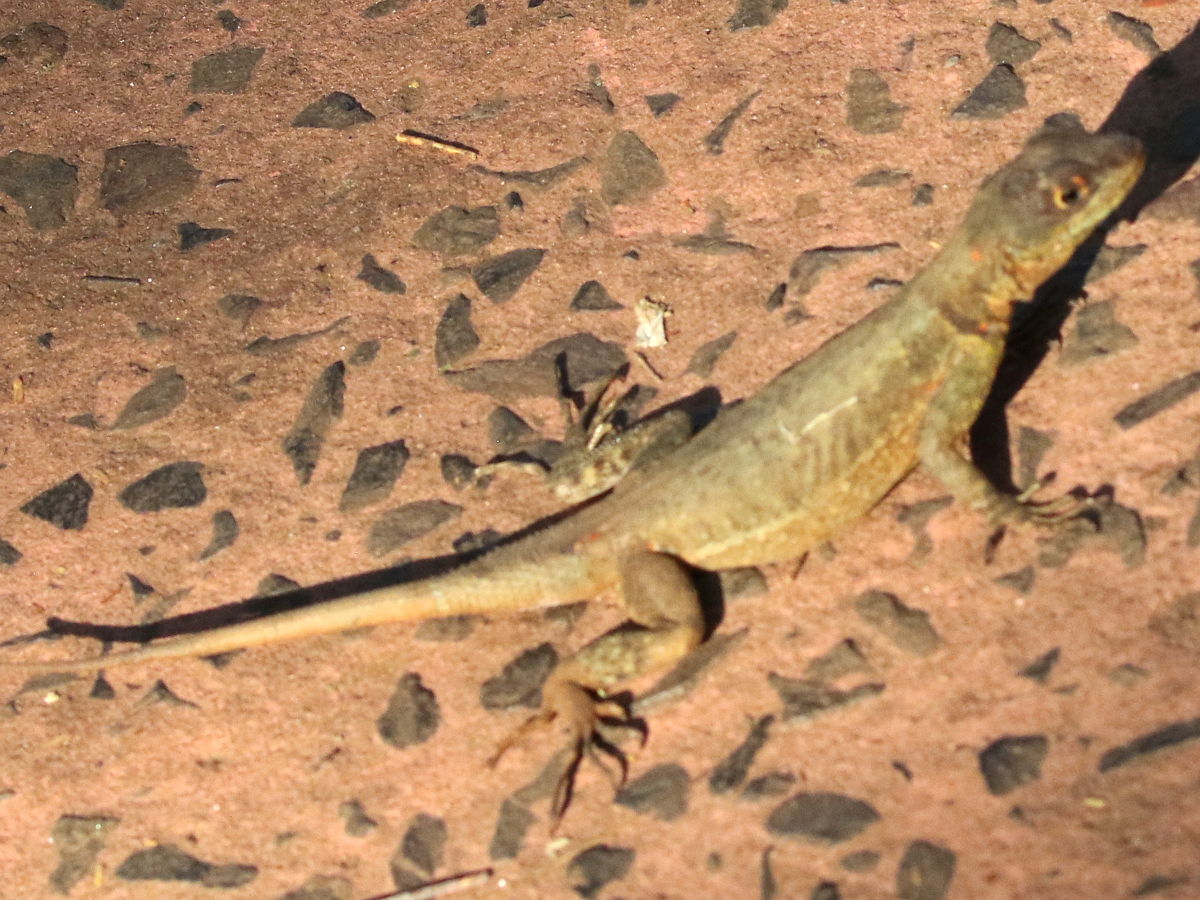|
Tropidurus Melanopleurus
''Tropidurus melanopleurus'', the black lava lizard, is a species of lizard from the Andean region of western South America, ranging between the three different countries of Peru, Bolivia, and Argentina. It was described in 1902 by zoologist George Boulenger. It is fairly small in size, but is known for its different appearance and differing size between the males and females. However, while the patterns of color may be different between the sexes, both males and females have a very distinct physical color array with a patterned mix of green, orange, cream, black and or brown. This species of lizard lives in a generally warm to hot climate all year round and spends most of its day on the side of vertical rock structures in the mountains, feeding on various types of insects, with an emphasis on ants. Description Female individuals of this species have a black to brown head with a prominent cream stripe across the temporal region of the head and back. The females have a black dorsu ... [...More Info...] [...Related Items...] OR: [Wikipedia] [Google] [Baidu] |
George Albert Boulenger
George Albert Boulenger (19 October 1858 – 23 November 1937) was a Belgian-British zoologist who described and gave scientific names to over 2,000 new animal species, chiefly fish, reptiles, and amphibians. Boulenger was also an active botanist during the last 30 years of his life, especially in the study of roses. Life Boulenger was born in Brussels, Belgium, the only son of Gustave Boulenger, a Belgian public notary, and Juliette Piérart, from Valenciennes. He graduated in 1876 from the Free University of Brussels with a degree in natural sciences, and worked for a while at the Royal Belgian Institute of Natural Sciences, Brussels, as an assistant naturalist studying amphibians, reptiles, and fishes. He also made frequent visits during this time to the '' Muséum national d'Histoire naturelle'' in Paris and the British Museum in London. In 1880, he was invited to work at the Natural History Museum, then a department of the British Museum, by Dr. Albert C. L. G. Gün ... [...More Info...] [...Related Items...] OR: [Wikipedia] [Google] [Baidu] |
Tropidurus
''Tropidurus'' is a genus of reptiles. The genus includes many species of Neotropical ground lizards (family Tropiduridae). ''Tropidurus'' is the type genus of the family Tropiduridae. Geographic range and habitat Species in the genus ''Tropidurus'' are found on the South American mainland, especially in the Amazon Rainforest, but also in more arid regions. Common name No widely common name is used solely for species of the genus ''Tropidurus''. In their native range, they are simply called "Lagartixa" as are most similar animals. If anything, the Brazilian term ''calango'' is used to particularly refer to lizards of the genus ''Tropidurus''. Taxonomy The genus ''Tropidurus'' contains 30 described species, but new ones continue to be discovered. An additional seven species—the Galápagos lava lizards endemic to the Galápagos Islands—are sometimes placed here, too, but more commonly separated in the genus '' Microlophus'', instead. Similarly, the green thornyta ... [...More Info...] [...Related Items...] OR: [Wikipedia] [Google] [Baidu] |
Reptiles Described In 1902
Reptiles, as most commonly defined are the animals in the class Reptilia ( ), a paraphyletic grouping comprising all sauropsids except birds. Living reptiles comprise turtles, crocodilians, squamates (lizards and snakes) and rhynchocephalians (tuatara). As of March 2022, the Reptile Database includes about 11,700 species. In the traditional Linnaean classification system, birds are considered a separate class to reptiles. However, crocodilians are more closely related to birds than they are to other living reptiles, and so modern cladistic classification systems include birds within Reptilia, redefining the term as a clade. Other cladistic definitions abandon the term reptile altogether in favor of the clade Sauropsida, which refers to all amniotes more closely related to modern reptiles than to mammals. The study of the traditional reptile orders, historically combined with that of modern amphibians, is called herpetology. The earliest known proto-reptiles originated around ... [...More Info...] [...Related Items...] OR: [Wikipedia] [Google] [Baidu] |
Reptiles Of Peru
Reptiles, as most commonly defined are the animals in the class Reptilia ( ), a paraphyletic grouping comprising all sauropsids except birds. Living reptiles comprise turtles, crocodilians, squamates (lizards and snakes) and rhynchocephalians (tuatara). As of March 2022, the Reptile Database includes about 11,700 species. In the traditional Linnaean classification system, birds are considered a separate class to reptiles. However, crocodilians are more closely related to birds than they are to other living reptiles, and so modern cladistic classification systems include birds within Reptilia, redefining the term as a clade. Other cladistic definitions abandon the term reptile altogether in favor of the clade Sauropsida, which refers to all amniotes more closely related to modern reptiles than to mammals. The study of the traditional reptile orders, historically combined with that of modern amphibians, is called herpetology. The earliest known proto-reptiles originated ar ... [...More Info...] [...Related Items...] OR: [Wikipedia] [Google] [Baidu] |
Reptiles Of Bolivia
Reptiles, as most commonly defined are the animals in the class Reptilia ( ), a paraphyletic grouping comprising all sauropsids except birds. Living reptiles comprise turtles, crocodilians, squamates (lizards and snakes) and rhynchocephalians ( tuatara). As of March 2022, the Reptile Database includes about 11,700 species. In the traditional Linnaean classification system, birds are considered a separate class to reptiles. However, crocodilians are more closely related to birds than they are to other living reptiles, and so modern cladistic classification systems include birds within Reptilia, redefining the term as a clade. Other cladistic definitions abandon the term reptile altogether in favor of the clade Sauropsida, which refers to all amniotes more closely related to modern reptiles than to mammals. The study of the traditional reptile orders, historically combined with that of modern amphibians, is called herpetology. The earliest known proto-reptiles originate ... [...More Info...] [...Related Items...] OR: [Wikipedia] [Google] [Baidu] |




